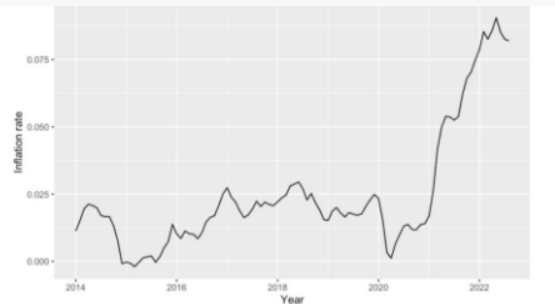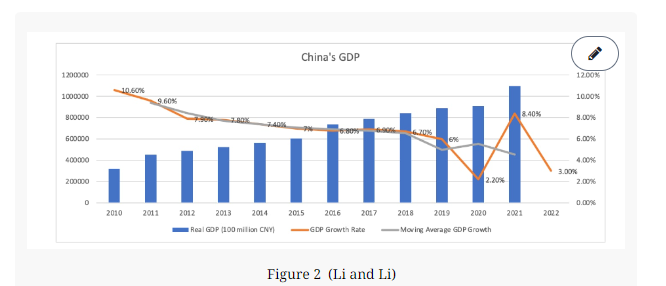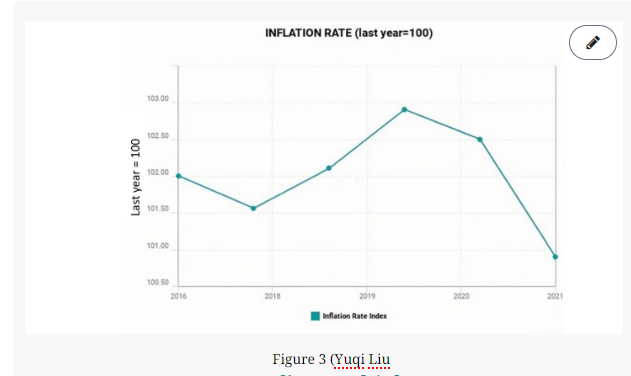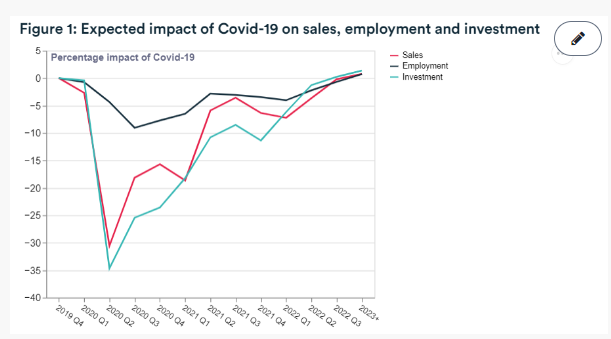Abstract
This paper offers a retrospective analysis of the COVID-19 pandemic through an economic lens. It aims to magnify the macro- and microeconomic impacts of the pandemic on first and third world countries. We will discuss how countries combatted the pandemic and the repercussions of this. We found that both third, and some first, world countries were taken by surprise when the pandemic reached them. Some third world countries had trouble adapting to the virus and thus had to reallocate sufficient resources and funds, and some first world countries, like the US or the UK, already had a struggling healthcare system due to previous external economic factors, such as the financial crash of 2008. They were therefore unprepared for the disease and could not respond as quickly to the threat posed by COVID-19. Today, the COVID-19 disease is no longer deemed a pandemic. It is now important to look back on the three years in which COVID-19 was the world’s principal concern, a daily talking point on the news. It required governments and people alike to innovate, adapt and change.
Literature Review
The COVID-19 pandemic, caused by the novel coronavirus SARS-CoV-2, has had a profound impact on the global economy, leading to widespread disruptions across various sectors. Researchers and economists have extensively studied the effects of the pandemic on economic growth, trade, employment, financial markets, and government policies.
Numerous studies have highlighted the unprecedented nature of the economic shock induced by the pandemic. According to McKibbin and Fernando (2020), the economic consequences of COVID-19 are multifaceted, with global GDP projected to decline significantly due to disruptions in supply chains, reduced consumer spending, and restrictions on mobility. The pandemic-induced economic downturn has been compared to the 2008 financial crisis, albeit with distinct characteristics and challenges (Fernandes, 2020).
The impact of COVID-19 on international trade has been a subject of considerable research. Baldwin and Tomiura (2020) found that global trade volumes experienced a sharp decline because of disruptions in production and logistical challenges. The pandemic highlighted the vulnerability of global supply chains to external shocks, leading to calls for greater resilience and diversification in trade networks.
The labour market repercussions of the pandemic have been a focal point of research. Economists have documented the widespread job losses, furloughs, and income inequalities exacerbated by the crisis (Nicola et al., 2020). The International Labour Organization (ILO) estimated that millions of jobs were lost globally, particularly in sectors such as tourism, hospitality, and retail, leading to a surge in unemployment rates across many countries.
Government responses to the economic fallout from COVID-19 have varied widely and have been analysed extensively. Research by Hale et al. (2020) highlighted the correlation between containment measures, such as lockdowns and social distancing policies, and economic outcomes. Governments around the world implemented fiscal stimulus packages, monetary policy interventions, and social support programmes to mitigate the economic impact of the pandemic and support businesses and households during the crisis (Furceri et al., 2021).
In conclusion, the literature concerning the impact of COVID-19 on the global economy underscores the unprecedented challenges faced by countries worldwide. The pandemic has revealed vulnerabilities in economic systems, emphasised the importance of resilience and adaptability, and raised questions about the future trajectory of economic recovery and growth post-crisis.
Introduction
The COVID-19 disease was initially thought to be pneumonia of unknown origin. The disease was linked to the Huanan seafood market in December of 2019, and was declared a pandemic on the 12th of March 2020 (Ciotti et al.). From the very beginning, the pandemic has had a major effect on the world’s economy, deeming it a de-globalisation process for the transport of goods, capital, people, and business, in turn causing production and manufacturing to stop (Barua).
Initial impact of the pandemic on the global economy
Even in the first months of the pandemic, the economic repercussions were abundant. The economies of the G7 countries (USA, Canada, France, Germany, Italy, Japan, and the UK) for example were heavily impacted. These countries share 60% of the world’s supply and demand, 65% of world manufacturing, and 41% of the world’s manufacturing exports (Barua) as they hold such an immense amount of authority over the global market. This means that when these countries get economically impacted, it will typically send more shockwaves across other nations.
Amongst the countries the most impacted by COVID-19, those in the G7 forum were hit the hardest; the UK and USA, with 285,416 and 2,955,345 cases respectively as of the 5th of July 2020 (Abba Ahmed), were particularly impacted. As these two nations were the most impacted by a significant margin, especially the USA, it is imperative to analyse the impact on them.
It is worth noting that in comparison to countries such as Japan and Germany, the USA and UK were unprepared for the pandemic. This stems from their underfunded public health services caused by years of deregulation and privatisation due to neo-liberal free market economics (Mellish, Timothy I.). Additionally, factors such as the 2008 recession have negatively impacted the UK and USA’s investments into their healthcare systems, leading to a surge in cases and a plethora of effects which will be elaborated upon further in this paper.
A major effect of the pandemic on both people and governments is that of the number of people applying and receiving unemployment aid. The number of people seeking unemployment benefits under the unemployment insurance plan skyrocketed from 1.7 million on January 25th 2020, to 28.3 million on July 25th of the same year (Gavrilović and Vučeković). According to the Bureau of Labor Statistics, in April 2020, about 20 million Americans lost their jobs, and the US’ national unemployment rate increased to 14.7%, making it the highest since the Great Depression.

Since the beginning of the COVID-19 pandemic, the Gross Domestic Product (GDP) growth of the USA has been greatly affected. Examining the GDP is an effective means to measure how well the economy is doing: one can then decide if there are any monetary and/or fiscal policies that need to be introduced to maintain the stability of the economy. The USA observed a decline in GDP of approximately 5% and stock trading volume by about 55% (Kang). This highlights that the economy is shrinking: people spend less when they are quarantined, more people are unemployed, and workers do not get pay rises. This amalgamation of factors caused such a decrease in GDP.
The USA experiences significant inflation rates, as shown in Figure 1 (Guo). The graph highlights that when the pandemic initially reached the USA, there was a slight spike in inflation, however directly afterwards there was a severe deflation – the lowest since 2015. Deflation entails falling incomes and higher rates of unemployment. In 2021, during one of the peaks of the pandemic, the USA experienced inflation as the prices of goods and the ratio of job vacancies to unemployment both increased, yet wages remained stagnant.
Another point of relation are supply chains and supply and demand. Due to the USA’s reliance on global supply chain networks, their supply chain was left vulnerable and weak: in the midst of the COVID-19 pandemic, the import and export of goods globally decreased, and the global import and export trade scale reached 11.98% import and 13.48% export (Tang).
Due to the US’ reliance on goods from other countries, supply and demand in relation to consumers of items, like bicycles, was heavily impacted. Bicycles as an alternative to other means of public transport gained popularity at this time due to fear of virus propagation. Computer chips also caused ripples of disruptions: the shortage affected the automotive industry, where manufacturers were forced to remove temperature controlled seats in their SUVs and trucks. The chip shortage also impacted the gaming industry. When Sony released their newest generation console, the PlayStation 5 (PS5), upon release and for the next year, it was near on impossible to buy a PS5 at the manufacturer’s suggested retail price (MSRP) as, due to the chip shortage, there were so little being produced, yet demand was higher than ever. Although the PS5 is not a necessity when the world is facing a global pandemic, it serves as an adequate example to demonstrate the effects of shortages. The bicycle and computer chip shortages share one major factor – China is the largest manufacturer of both, a country at the crux of our examination of the pandemic from an economic lens.
China
As the most populated country on the planet, it is paramount to address the economic impact of China. China is the world’s largest exporter and manufacturer of goods, as well as the epicentre of the pandemic, having started in a seafood market in Wuhan in 2019. When the pandemic was starting to become a serious concern in early 2020, the Chinese government implemented a series of policies, many of which were globally adapted, such as quarantines and social distancing. China also stopped all modes of public transport, including buses, trains and taxis. Transportation became a pertinent concern to those in the workforce who began to question how they would get to work. As a result of the quarantine policies, employees were let go, and unemployment rates increased; between January and September 2020, unemployment increased by 27-62% as China’s unemployment rate reached an all time high of 6.2% in February 2020, with female workers over 40 years old and migrants affected the most (Barwick et al.). This fell slightly in March of the same year (5.9%). Although this might seem low in comparison to the USA, it is a substantial leap: unemployment rates prior to the pandemic ranged from 3.1-4.3% (Barwick et al.).

Figure 2 illustrates China’s GDP between 2010 and 2022. The increase between 2015 and 2019 suggests that the country’s growth rate is very tight (between 6-7%), however in 2020 it dips to 2.2%. According to the World Bank Open Data, this is the lowest it has been since 1976 (-1.6%). In 2020, the economy shrank as different sectors were affected by the pandemic, causing job losses and wage cuts. People were therefore staying home and spending very little money. Sectors such as aviation, tourism, and service were negatively impacted, while other sectors flourished – developments are often best made when they are most needed (He).
In the case of the pandemic, medicine saw a surge in development – China developed a home-produced COVID-19 vaccine, developed by CSPC Pharmaceutical Group – while the internet industry partnered with the healthcare sector to offer innovative online healthcare through companies like Tencent and Alibaba, and platforms like DXY. This allowed patients to meet with doctors online for a professional consultation at home, and due to China’s 5G internet speeds, hospitals were able to share their resources to other provinces without a loss in quality of image or video. Systems were created to allow the populace to undergo self-assessments, reducing the necessity for people to leave their houses; these services would inform the patients whether they should visit a hospital for further consultations and care, or to stay at home. This reduced non-essential hospital visits and the need for people to leave their homes unnecessarily, hence combatting the virus: risks of cross-infection are much lower when fewer people are outside, instead confined to their homes (Lau Sengyee). Due to COVID-19 mandated social distancing regulations, most businesses and all schools made the transition to online platforms to try to reduce the spread of the virus. This has been deemed the largest online movement in the history of education. The platform ‘Tencent Classroom’ gained approximately 1.28 million new users, while other platforms also gained similar levels of traction (Lau Sengyee).

While the USA and many European countries underwent high inflation, China’s inflation was low and stable. Figure 3 shows that China’s inflation increased by 0.4%, with a 20% decrease in price change probability (Jiang et al). This suggets that the price of goods would likely have decreased, thereby encouraging consumers to buy more and thus aiding the economy.
The impact of Covid on Domestic Economies
Bangladesh
The global impact of COVID-19 on the domestic economies of countries came in the form of workplace shutdowns and governments worldwide forced to increase spending. National debts during this time soared, with many countries facing GDP contractions as well as increased rates of poverty. According to UN estimates, the global economy shrunk by 4.3% in 2020, even more than the contraction faced after the 2008 global financial crash. An estimated 131 million people were pushed into poverty in 2020 (UN, 2021) – the largest annual increase in global poverty ever recorded since records began. The purpose of this section is to look into how economies were affected in low, middle, and high-income countries: how they differed, what they had in common, and how their different circumstances affected their Covid responses.
Bangladesh is a low-income country in South Asia. It is a very populous country, with over 145 million residents, and is highly specialised in textile manufacturing. Despite going through a period of economic growth, Bangladesh remains incredibly vulnerable to global economic shocks due to its reliance on exports and global trade. In the midst of the COVID-19 shutdowns, demand for goods plummeted and the economies of developed countries began to contract. At this time, Bangladesh was heavily reliant on companies based in developed countries, as well as their consumers, to fuel its export-based economy. This caused a crash domestically for Bangladesh. Experiencing its own local shutdowns, coupled with its status as a heavily manufacturing-based economy, meant that Bangladesh could not easily transition to at-home working. As a result, Bangladesh’s main industry was severely hampered by the pandemic, with the industrial production of “Garments and Knitwear” falling by over 80%. Over 2 million workers previously employed in the sector were out of a job, and over 20 million fell into poverty (Shahadat Hossain, 2023).
However, Bangladesh was in an advantageous position to weather the storm. Various essential industries remained open during the early stages of the pandemic, and despite the country’s reliance on global trade for its primary export, Bangladesh’s second largest sector was the service industry. In part due to the initial response to COVID-19 in Bangladesh, the economy did not stay shut down for long and reopened after only a couple of months, mitigating the disastrous impact the pandemic had had on Bangladesh’s textile manufacturing. With other sectors of the Bangladeshi economy, inflation was kept as low as possible, not exceeding pre-pandemic levels. Food inflation remained low and the economy was saved from freefall as it was assisted by a series of NGOs already present in Bangladesh, such as the SAJIDA foundation.
Ultimately, Bangladesh was in a strong position to respond to the pandemic, and according to the World Bank, was one of the few countries to not face a GDP contraction in 2020.
Brazil
Brazil is a large country in South America. Despite its status as an upper-middle income country, expansive land area, large natural resource reserves, and political leverage over much of South America, Brazil was notoriously hit very hard by the COVID-19 virus, almost experiencing the highest number of deaths in the world, second only to the United States.
During the pandemic, Brazil’s GDP faced the largest contraction it had seen in decades, and its health sector was put under immense pressure. Due to the scale of the pandemic in Brazil, massive economic shutdowns had to take place. The government deficit grew as it undertook efforts to keep the poorest Brazilians afloat as over 10 million lost their jobs. Brazil had been on an upward trend for a few years prior to the pandemic; while unemployment rates remained high and wealth inequality was a big issue, the economic growth of Brazil had begun to stabilise at around 4-5% a year. However, with the onset of the pandemic, the underlying problems in Brazil became omnipresent: food shortages in several communities arose as many of the poorest Brazilians could not get sufficient treatment from the state’s overstretched health service; harsh lockdowns were introduced as the pandemic escalated, resulting in the halting of most exports; demand fell as households consumed fewer imported goods; and investments fell as foreign investors became uncertain of their return on investment.
Due to its staggeringly high infections and deaths, Brazil struggled to effectively manage the virus. There is no doubt that the government response to COVID-19 was not as successful as it was in Bangladesh. All factors of production were severely affected, and Brazil’s upward trend was stunted. Like the case of Bangladesh, unemployment rose significantly and the Brazilian government was forced to spend more money to keep various public sectors afloat. Unlike Bangladesh, however, Brazil’s economy was not in as strong of a position prior to the pandemic, and there weren’t as many NGOs to support government efforts.
Overall, Brazil was severely affected by the pandemic – demand collapsed, unemployment rose, investments decreased, and shortages compounded – and the country will have to take steps to prevent such an unmitigated disaster from happening again.
United Kingdom
The United Kingdom is a high-income country in Western Europe. Before the pandemic, the UK had been going through a tumultuous period, ironing out a Brexit deal and dealing with years of budget cuts to various public sectors. When the pandemic struck, as is the case with the previous two cases, household spending dropped significantly. This was compounded by the largest contraction in GDP since World War II and further issues, including surging inflation and cost of living. The pandemic also caused immense strain to the severely underfunded NHS, which was in a very vulnerable state after years of austerity cuts.
In an attempt to mitigate the effects of shrinking demand on employment, the British government introduced the furlough scheme. Unemployment rose to 5.3% in the first half of 2020, although many estimates say this would have been higher had it not been for the sharp increase in spending undertaken by the British government. Despite this success, there were still many failures that were not accounted for: public confidence in the economy began to decline and many of the poorest Britons were left in dire straits; the already-strained NHS was completely overwhelmed as shortages of staff and medical equipment were rampant; small businesses were hit hard by the pandemic, reporting a decline in sales of 30%; and investments also sharply declined, as shown by the figure below.

While the furlough scheme did help to mitigate unemployment, other aspects of the economy still suffered. The UK was hit particularly hard by subsequent crises amplifying the impact that COVID-19 had on the country, including the Russo-Ukrainian war, which exasperated the cost of living crisis as energy prices soared. This may not have been a direct consequence of the pandemic, but it did exacerbate problems; the UK is still struggling with soaring prices and a broken NHS, all of which was magnified by the pandemic.
CONCLUSION
In conclusion, COVID-19 was a dire time for the economy, impacting a variety of different countries. The pandemic provided an opportunity for communities to adapt to change: the retail industry underwent a transition to the online marketplace, businesses adapted to stay afloat in the face of shrinking economies, and governments implemented new regulations to keep the population safe. While all countries were impacted initially, they were forced to acclimatise to living with the virus in order to prevent economic collapse. This proved to be easier for first world countries, such as the USA and the UK, as they were able to allocate some resources to combatting the pandemic. Third world countries, such as Brazil, had a much more difficult time.
In our research, we faced some limitations. There were only two of us, limiting the number of sources we could collate in the allotted time. As students, we had trouble accessing some research papers, which held us back from including some pieces of information or data to support our argument, however we tried to compensate by looking at other sources that we did have access to.
In considering any future research papers in a similar field to ours, we believe that studying the very few – if any – countries that were prepared for the pandemic to any degree, and how their economies were impacted in a different fashion to the countries we have referenced, would be beneficial. We believe that the COVID-19 pandemic is a historic event to which the response should be studied and analysed further. Ultimately, disease does not simply disappear, and we believe that one day there will be another global pandemic. In recording how the COVID-19 pandemic affected economies, and how its effects were mitigated, we hope that the next time such an event occurs, the world will be better prepared.
Bibliography
Abba Ahmed, B. (2020). Impact of COVID-19 Pandemic on Global Economy. [online] papers.ssrn.com. Available at: https://papers.ssrn.com/sol3/papers.cfm?abstract_id=3719949.
Ahmed, T., Parsa Musarrat and Zarina Nahar Kabir (2023). Lessons learned from pandemic response to COVID-19 in Bangladesh: NGO-based emergency response framework for low- and middle-income countries. Lessons learned from pandemic response to COVID-19 in Bangladesh: NGO-based emergency response framework for low- and middle-income countries, 23(1). doi:https://doi.org/10.1186/s12913-023-09643-w.
Bank of England (2021). The UK economy during Covid-19: insights from the Bank of England’s Citizens’ Panels. [online] www.bankofengland.co.uk. Available at: https://www.bankofengland.co.uk/about/get-involved/citizens-panels/the-uk-economy-during-covid-19-insights-from-the-bank-of-englands-citizens-panels.
Barua, S. (2020). Understanding Coronanomics: The Economic Implications of the Coronavirus (COVID-19) Pandemic. SSRN Electronic Journal, [online] 55(3). doi:https://doi.org/10.2139/ssrn.3566477.
Barwick, P.J., Deng, Y., Huang, X., Li, S. and Li, T. (2020). COVID-19 Pandemic and Unemployment: Evidence from Mobile Phone Data in China. SSRN Electronic Journal. doi:https://doi.org/10.2139/ssrn.3755371.
Bhatt, G. (2022). Rethinking Fiscal Policy and Debt for a Post-Pandemic World. [online] IMF. Available at: https://www.imf.org/en/Blogs/Articles/2022/03/02/rethinking-fiscal-policy-and-debt-for-a-post-pandemic-world.
Caribbean, E.C. for L.A. and the (2021). Preliminary Overview of the Economies of Latin America and the Caribbean 2020. [online] www.cepal.org. CEPAL. Available at: https://www.cepal.org/en/publications/46504-preliminary-overview-economies-latin-america-and-caribbean-2020.
Chang, S. (2023). China’s Supply Chain During COVID-19: Disruption and Mitigation. BCP Business & Management, 38, pp.1740–1744. doi:https://doi.org/10.54691/bcpbm.v38i.3960.
Ciotti, M., Ciccozzi, M., Terrinoni, A., Jiang, W.-C., Wang, C.-B. and Bernardini, S. (2020a). The COVID-19 Pandemic. Critical Reviews in Clinical Laboratory Sciences, [online] 57(6), pp.365–388. doi:https://doi.org/10.1080/10408363.2020.1783198.
Ciotti, M., Ciccozzi, M., Terrinoni, A., Jiang, W.-C., Wang, C.-B. and Bernardini, S. (2020b). The COVID-19 Pandemic. Critical Reviews in Clinical Laboratory Sciences, [online] 57(6), pp.365–388. doi:https://doi.org/10.1080/10408363.2020.1783198.
Gavrilović, K. and Vučeković, M. (2020). Impact and consequences of the COVID-19 virus on the economy of the United States. International Review, (3-4), pp.56–64. doi:https://doi.org/10.5937/intrev2003056g.
Guo, Y. (2023). Times Series Analysis on Inflation in the U.S. under COVID-19 Pandemic. BCP Business & Management, [online] 44, pp.84–93. doi:https://doi.org/10.54691/bcpbm.v44i.4797.
Kang, H. (2021). Analysis of the Impact of COVID-19 on the U.S. Economy Based on Big Data Processing and Experimental Analyses. [online] IEEE Xplore. doi:https://doi.org/10.1109/BDEIM55082.2021.00080.
Lau Sengyee (2020). How China’s industrial internet is helping to fight COVID-19. [online] World Economic Forum. Available at: https://www.weforum.org/agenda/2020/04/china-covid-19-digital-response/.
Li, H. and Li, X. (2023). The COVID-19 Pandemic’s Impact on the Chinese Economy. [online] China Research Center. Available at: https://www.chinacenter.net/2023/china-currents/22-1/the-covid-19-pandemics-impact-on-the-chinese-economy/#:~:text=After%20the%20outbreak%20of%20COVID.
Ministério De Minas E Energia (n.d.). 2031 10 year energy expansion plan. GOV.BR.
Mizen, P. (2022). Two years on, how has the pandemic affected businesses in the UK? [online] Economics Observatory. Available at: https://www.economicsobservatory.com/two-years-on-how-has-the-pandemic-affected-businesses-in-the-uk.
Office for National Statistics (2021). GDP and events in history: how the COVID-19 pandemic shocked the UK economy – Office for National Statistics. [online] www.ons.gov.uk. Available at: https://www.ons.gov.uk/economy/grossdomesticproductgdp/articles/gdpandeventsinhistoryhowthecovid19pandemicshockedtheukeconomy/2022-05-24#eventg.
Shahadat Hossain, M. (2023). COVID-19’s Impact on Bangladesh Economy – BRAC Institute of Governance and Development. [online] BRAC Institute of Governance and Development. Available at: https://bigd.bracu.ac.bd/publications/covid-19s-impact-on-bangladesh-economy/#:~:text=In%20addition%20to%20the%20recent [Accessed 27 Jul. 2024].
Sott, M.K., Bender, M.S. and da Silva Baum, K. (2022). Covid-19 Outbreak in Brazil: Health, Social, Political, and Economic Implications. International Journal of Health Services, [online] 52(4), pp.442–454. doi:https://doi.org/10.1177/00207314221122658.
World Bank Open Data. (n.d.). World Bank Open Data. [online] Available at: https://data.worldbank.org/indicator/NY.GDP.MKTP.KD.ZG?end=2023&locations=CN&skipRedirection=true&start=1961&view=chart.
www.un.org. (2021). World Economic Situation And Prospects: February 2021 Briefing, No. 146 | Department of Economic and Social Affairs. [online] Available at: https://www.un.org/development/desa/dpad/publication/world-economic-situation-and-prospects-february-2021-briefing-no-146/#:~:text=In%202020%2C%20world%20output%20shrank.




